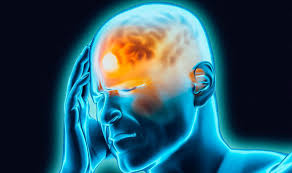How to tell the cause of your headache
Headache refers to any pain of varying intensity that is localized in the head region and neck region
Every person at some point in their lives has had a headache. While most headaches will just go away on their own or after a painkiller, some just need an urgent medical attention. Headaches are very common and often one can manage the pain.
We have headaches that are as a result of illnesses, that is associated to an illness and there are headaches that are just a pain in the head.
Types of headaches
There are very main types of headaches but we will look at just the most common types.
- Migraine
Migraine is considered the seventh-most disabling condition according to the 2015 study by Global Burden of Diseases. This type of a headache can run in the family. It is accompanied by an intense pounding or a throbbing headache that lasts several hours to 3days. It can occur up to four times a month. There is no known cause of migraines and hence no cure. Migraines will limit your activeness or even worsen with any physical activity. The pain can be one-sided kind of pain and can be moderate to severe in intensity.
People with migraines may be nauseous, sensitive to light, smell and sound and may even vomit or have stomach upset. Children with migraines may
- Sinus Headache
When your sinus becomes inflamed, it can cause a very distracting and uncomfortable headache. Sinus infections can be as a result of cold and flu or allergic reactions. When they are infected they produce a lot of mucus and if they don’t drain well then they become blocked causing a built up pressure. This built up pressure is what feels like a headache that is usually in your cheekbones, bridge of your nose and forehead. The pain gets worse with any movement.
Sinus infection can be relieved by taking antibiotics, decongestants or antihistamines.
- Cluster Headaches
About 1 out of 1000 people get cluster headache attacks. This kind of headache is very distinctive and tends to be one-sided during an attack. It comes as a piercing or stabbing pain and is very intense that you can’t do anything. It lasts about 10minutes to 3 hours then disappears but can recur several times a day. People who take alcohol frequently have cluster headaches as alcohol triggers it.
Cluster headaches are more severe than migraines. There is no known cause or cure but it’s said that it involves a nerve In the face which creates the intense pain around the eyes.
- Tension Headaches
These are the most common type and are rarely that severe, over-the-counter treatments are enough to treat them. They come as a constant ache or pressure especially at the back of the head, neck or the temples. They do not limit any physical activity or movement and don’t cause any nausea or vomiting.
It is believed that they are caused by changes in brain chemicals and neck muscle contractions as a result of lack of enough sleep and rest, stress, fatigue, hunger, bad posture and low iron levels.
Tension headaches can be chronic or episodic. It is advisable to treat them as soon as they start. You can take prescribed painkillers and homemade remedies to cure tension headache. Also, avoid the triggers to prevent this kind of headaches.
Headache Types by Location
Forehead: Headache along both sides of the forehead are mostly tension headache, sinus headaches, dehydration headache, eye strain, anxiety headache or headaches accompanied by digestion problems or kidney and gallbladder ailments. They can also be caused by overindulgence of alcohol and food sensitivity
Top of the head. Headaches at the top of the headache can either be tension headache, cough headache, exertion headache as a result of strenuous physical activities or migraines.
Back of the head. This can also at the back of the neck. This headache is often linked to tension headache especially if you feel the neck muscle tensed.
Side of head: Headaches on the side of the head (temperal) can be linked to tension headaches, migraine headaches if it is on one side, and cluster headache if very severe.
Behind eye and around the eyes: Pain behind the eye can be a migraine while pain that is behind both eyes is sinus headache.
Headache Triggers
Headaches can be triggered by so many things. It can be lack of enough sleep, improper posture, long hours of work, fatigue, stress, changes in diet, body changes like menstruation, visual problems, earaches, tonsillitis, Influenza, changes in environment.
Migraines can be caused by addiction withdrawals, hormonal changes, and lack of caffeine if you are addicted to caffeine, hangovers and sinus infections. Headaches can be persistent or recurrent until the trigger has been dealt with.
Some of the Quick Home remedies
- Take some water to hydrate your body
- Over-the-counter painkillers
- Get your sinuses, tonsils or flu treated
- Get enough sleep
- Take a break and rest
- Hydrotherapy is the alternating use of cold and hot water al to stimulate circulation. This helps the blood vessel to dilate and constrict this by altering the body’s interpretation of pain. Massage can reduce the muscle tension throughout the body.
- Message to relax the body and muscles and reduce pressure.
- If you are a fan of Yoga, you can use Yoga to relieve muscle tension at the back of the neck and correct your posture.
Headache Prevention
- Stay hydrated
- Avoid your headache triggers
- Avoid medication dependency
- Eat your meals regularly; avoid skipping your meals to keep your energy levels up.
- Stay away from stressful situations
- Exercise as often as you can but don’t overdo it
- Reduce your caffeine intake
There is no definite cure for headaches but what you can do is to prevent a headache and manage the pain. Knowing your headache triggers will go a long way in prevention. If you sense that there is more to your headaches, please consult a doctor and let them do a further assessment to establish the underlying cause. Do not ignore and avoid self-treating.

Do you have any news or article you would like us to publish? Kindly reach us via outreach@t4d.co.ke or howtodoafrica@gmail.com.




















